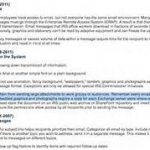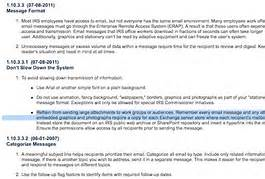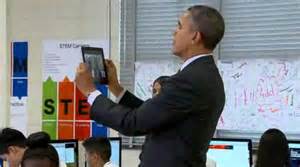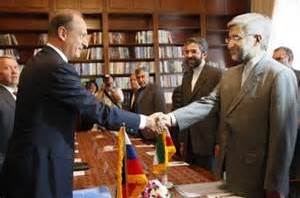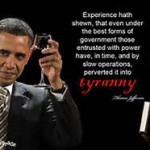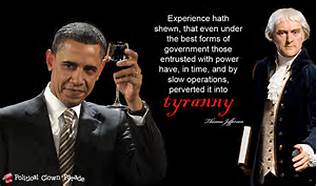As America celebrates Independence Day, could it be that the birth of a new nation was guided exclusively by Divine Providence? As the revolution was under way and the eventual demand for freedom from the British Crown became a reality, one must accept the notion that a higher power granted the pathway for a new nation to show the world that Christianity was to be the gift of strength, self reliance and benevolence.
Last September a group of apprehensive students gathered for the first meeting of a seminar I was offering for the first time. They weren’t sure they wanted to take the class. Indeed, they weren’t even sure what it was about. Imagine, then, their discomfort when I dispensed with all introductory remarks and bade them sit still for 32 minutes while I played a videotape of the entire presidential inaugural ceremony from January 2001. “Forget whether you favored Al Gore or George W. Bush,” I admonished, “and try to ignore Bill Clinton’s smirks in the background. Just watch the proceedings and think about what is transpiring.”
After the last ruffles and flourishes I asked the students— in a seeming non sequitur—what sorts of activities make up the liturgy of a church or synagogue service. Prayers, they answered, and hymns, psalms, a sermon. Did we just observe those activities on the tape, I asked? We certainly did, if we agree that inaugural addresses function as political sermons. Did we witness a solemn procession, invocation of the Divine, and convocation in which the congregation celebrates its shared beliefs? Yes, we did. How about a call to repentance and amendment of those ills that beset our society? Yes, again. And a dismissal in which the newly installed high priest calls on the assembled to go forth in faith and do good works? Indeed. Well then, I asked, if a presidential inauguration possesses all the properties of a religious service, what is the religion it serves? That, of course, was the mysterious subject of our semester’s quest “In Search of the American Civil Religion.”
The spiritual qualities of public rhetoric in American politics, courtrooms, churches, schools, and patriotic fetes used to be so pervasive, familiar, and unobjectionable that we citizens just took it for granted (until the advent of litigious atheists). Our national motto is “In God We Trust.” Our Pledge says we’re a nation “under God.” Our Congress and Supreme Court pray at the start of sessions. Presidents of all parties and persuasions have made ritual supplications that the United States might be blessed with divine protection. The last stanza of “America” begins “Our father’s God to thee, author of liberty, to thee we sing” and ends by naming “great God,” not George III, “our King.” The last stanza of the “Star Spangled Banner” asks our “heaven rescued land” to “praise the Power that has made and preserved us a Nation.” “America the Beautiful” asks that “God shed His grace on thee.”
Most Americans, even today, would likely agree with Boston Puritans John Winthrop, John Adams, and Jonathan Mayhew, Princeton Presbyterian Jonathan Witherspoon and his disciple James Madison, Virginian Anglican (and Freemason) George Washington, and Deists Thomas Jefferson and Benjamin Franklin that Americans are “called unto liberty” (a phrase from Paul’s epistle to the Galatians)—that we are a new chosen people and ours a new promised land, and that our mission is to bestow liberty on all mankind, by example if not exertion. To be sure, the majority of Americans always found it easy to identify the God who watches over America with the God of their Protestant theology. But thanks to the free exercise of religion—the “lustre of our country” ensured by the First Amendment—religious minorities have been free to embrace the American Creed with equal or greater fervor.
Thus did Bishop John Carroll, founder of the American Catholic Church, “sing canticles of praise to the Lord” for granting his flock “country now become our own and taking us into her protection.” Thus did Jewish immigrant Irving Berlin liken Americans to the Children of Israel being led through the Sinai: “God Bless America, land that I love, stand beside her and guide her through the night with a light from above.” When Americans of all sects or no sect gather in civil ceremonies to praise their freedom, honor its Author, and rededicate themselves to their nation’s deals, they do not merely prove themselves a religious people, they prove the United States of America is itself a sort of religion, a civil religion, or as G. K. Chesterton put it in 1922, “a nation with the soul of a church.”
II. Faith of Our Fathers
Civil religion broadly defined is a universal phenomenon. The ancient Greeks and Romans worshiped the gods and goddesses whom they believed to be patrons of their local city-states and regional empires. To chant “Great is Diana of the Ephesians” or to burn incense to Caesar was to pay political as well spiritual obeisance. The cults of the god-kings and god-emperors of Egypt, China, Korea, and Japan were civil as well as religious. Even monotheistic Judaism displayed features of a civic cult in the eras of its monarchy and two temples. In late medieval and early modern Europe, the divine right of kings conflated civil and religious loyalties, while the city-states of the Italian Renaissance, emulating as the ancients, inspired their own patronage cults albeit this time to saints (e.g., St. Mark in Venice). But the modern concept of civil religion was born of the Protestant Reformation’s notion of civic polity as a holy covenant or social contract made by the people themselves. James Harrington, theoretician of Cromwell’s Puritan Commonwealth in mid-17th century England, and Jean- Jacques Rousseau, philosopher from the Geneva Republic in the mid-18th century, asked, what might hold a government of the people together in the absence of royal or ecclesiastical hierarchy? Their answer was civil religion, a faith and commitment all the more powerful for being voluntary (not imposed), devoted to the unity and prosperity of the commonwealth (not a king or oneself), and inspired by devotion to God or Nature (rather than corrupt human authorities). Patriotic American choirs gave voice to such religiosity when they sang in 1778, “To the King they shall sing Hallelujah, and all the continent shall sing: down with this earthly King; no king but God.”
I was not aware of our American civil religion (ACR) until I began researching my new book, Freedom Just Around the Corner. Evidence of the ACR piled up until I was obliged to make it a major theme in the story of American independence and early national growth. Then, while preparing my seminar, I learned how few Americans in the 19th and 20th centuries were fully conscious of the religion they shared. Walt Whitman, the ACR’s poet laureate, certainly was, as was Whitman’s hero Abraham Lincoln, the ACR’s martyr and messiah. Later, when the United States got into the business of exporting its faith in the Spanish-American and First World Wars, a handful of scholars wrote books on “the American religion” and “the religion of the flag.” But otherwise American statesmen, artists, teachers, and preachers disseminated the creation myth, martyrology, moral code, theology, liturgy, and eschatology of American republicanism without explicitly acknowledging its status as a transcendental creed.
Indeed, not until 1967 did Berkeley sociologist Robert N. Bellah describe, in a celebrated article, what he christened “the American Civil Religion.” Curiously, what inspired him to think about the matter was the 1961 inauguration of the nation’s first Roman Catholic president, John F. Kennedy. Prior to that, intellectual scoffers could dismiss the “God talk” permeating American public life as evangelical cant aimed at Bible Belt voters. Bellah observed a young, hip, liberal, rich, Harvard-trained Catholic politician intoning “the belief that the rights of man come not from the generosity of the state but from the hand of God” and “asking His blessing and His help” in the knowledge “that here on earth God’s work must truly be our own.” Fascinated by the nonsectarian (or polysectarian) cast of this rhetoric, Bellah recalled President Eisenhower’s observation, “Our government makes no sense unless it is founded in a deeply felt religious faith—and I don’t care what it is!” Clearly there was more to this than feel-good piety or pandering to the “religious right” (or, in past eras, left). So Bellah turned to history and found he could trace the ACR back to the Founding Fathers. They had indeed preached a civil faith meant not to replace Bible-based denominations, but rather to stand above them in benign toleration so a disparate people might unite and fulfill the glorious destiny God planned for them.
But who is this God of the Founders, the God of the ACR, if not Jehovah or the Holy Trinity? He is the God with no name, but a hundred names. Franklin called him Father of Lights and Supreme Architect; Washington the Almighty Being, Invisible Hand, and Parent of the Human Race; John Adams the Patron of Order, Fountain of Justice, and Protector; Jefferson the Infinite Power; Madison the Being who Regulates the Destiny of Nations; Monroe merely Providence and the Almighty; John Quincy Adams the Ark of our Salvation and Heaven; Andrew Jackson that Power and Almighty Being Who mercifully protected our national infancy; and so on down to Lincoln who reached the tragic understanding that Northerners and Southerners prayed—as Christians—to the same God in the Civil War, but as Americans must hear “the mystic chords of memory,” indulge “the better angels of our nature,” admit “the judgments of the Lord are true and righteous altogether,” and strive to bind up the nation’s wounds “with malice toward none, with charity for all, with firmness in the right as God gives us to see the right.”
Lincoln never could bring himself to embrace Christian faith, but was himself the Christ of the ACR. Jackson posed for electoral purposes as a Presbyterian, but was in fact a fervent Freemason who believed in a God above all theologies, the very God whose All-Seeing Eye looks down benignly on the Unfinished Pyramid of the Great Seal of the United States and our one-dollar bill. Jefferson was an Enlightened philosopher who clung romantically to a faith in reason alone. Yet they, no less than devout Protestant presidents, swore fealty to the Providence that seemed to watch over the American people.
“Seemed to watch over” is a loaded phrase. For however much historians trace the intellectual origins of the American Creed to Harrington’s republicanism, John Locke’s human rights philosophy (” life, liberty, and property” ), the Scottish Enlightenment (” the pursuit of happiness,” “common sense,” and free markets), English common law, Whig ideology, and the evangelical individualism of the First Great Awakening, the fact remains that the ACR derived in large part from American colonists’ experience over 150 years. The Bible makes clear that Jews and Christians did not invent their religions; rather it was their experience of Divine intercessions in history that turned them into Jews and Christians in the first place. In like fashion, the things that happened to American colonists—material blessings beyond measure, deliverance from “Egyptian bondage” in the Old World, the liberty and self-governance sheer remoteness allowed, a sense of being guided for some higher purpose, not least the extraordinary series of “lucky” events that permitted 13 ragtag, divided colonies to win independence from earth’s greatest empire—invited Patriots to embrace an inchoate but powerful faith that they, their forbears, and their descendants were actors in a play scripted by the Author of History. Indeed, it is almost impossible to imagine the Continental Congress, comprised mostly of wealthy, well-connected men with the most to lose by rebellion, ever taking the leap of declaring independence without faith that the justice of their cause ensured divine blessing on their cause.
But divine blessing comes at a price. That was the message of Abraham, Moses, Jonah, Jeremiah, St. Paul, and the Revelation to St. John. It was also the message of the radical Deist and immediate inspiration for the Declaration of Independence, Tom Paine.
III. Prophet of Exodus
Early in 1775 the 13 colonies were ablaze with resistance to Britain’s Intolerable Acts. In the years following the great Anglo-American victory in the last French and Indian War, the British Parliament, with the blessing of the king, violated all the spirits that had infused the English imperial mission for 200 years: anti-Catholicism, rivalry with France and Spain, agricultural and mercantile capitalism, and displacement of “savage” peoples who made little use of their lands (e.g., the Irish and Native Americans). Thus, Americans were shocked by Parliament’s Quebec Act, which tolerated the Roman church in newly won Canada, outraged by the royal Proclamation Line forbidding new frontier settlements in the name of sheltering Indians, and incredulous that the peace treaty of 1763 drove France out of North America, only to cede the west bank of the Mississippi to equally hated Spain. But most of all, the new taxes, commercial restrictions, and monopolies imposed on the colonies, whether or not they were particularly onerous, forced colonists to ask what taxes and monopolies Parliament might not impose in the future if its powers and sovereignty were once granted in principle. No wonder Patriots such as John Dickinson spied in Parliament’s acts a plot to reduce the colonists to the status of slavery.
The Stamp Act Congress of 1765 and Continental Congress in 1774 urged the colonies to unite, resist, and make themselves worthy of divine protection by boycotting English luxuries and staging days of fasting and prayer. The British were equally determined to punish colonial impudence, fearing that their whole empire might unravel if they did not. Accordingly, after the infamous Boston Tea Party, the Royal Navy blockaded the port and Redcoats patrolled its streets. Down in Philadelphia, Congress urged solidarity with Massachusetts lest all the colonies lose their liberties, while Patrick Henry preached a fiery sermon in Richmond. Everyone knows its stirring climax, “Give me liberty or give me death!” But Henry preceded that by assuring his listeners:
We shall not fight our battles alone. There is a just God who presides over the destinies of nations, and who will raise up friends to fight our battles for us. The battle, sir, is not to the strong alone; it is to the vigilant, the active, the brave. Besides, sir, we have no election. If we were base enough to desire it, it is now too late to retire from the contest. There is no retreat but in submission and slavery! Our chains are forged! Their clanking may be heard on the plains of Boston! The war is inevitable—and let it come! I repeat it, sir, let it come.
The war came in April 1775 on Lexington Green. Yet the colonies’ representatives shrank for over a year from severing their ties to the crown. Many New Englanders and Virginians may have been eager to train the rhetorical and genuine cannon, so recently aimed at the French crown and Catholic church, on the English crown and Anglican church. But many New Yorkers, Rhode Islanders, and South Carolinians looked to their trade, which was bound to suffer gravely in war. The Quakers of the Delaware Valley were pacifist on principle. Several colonies counted as many Loyalists (Tories) as Patriots. How was it then, in the words of John Adams, that thirteen clocks at last struck as one?
Tom Paine was a 37-year-old ne’er-do-well when he landed in Philadelphia in November 1774. The rudely educated son of a Quaker father and Anglican mother, he had failed in two marriages and numerous jobs ranging from corset-maker to collector of taxes on tobacco and liquor. His sole achievement in life was a broadside exposing corruption among excise officials, which he blamed on the low wages they received. But by chance (or Providence), the colonial agent in London, Benjamin Franklin, advised Paine to seek his fortune in America. Armed with Franklin’s recommendation, Paine was invited to write articles for the Pennsylvania Magazine which in turn caught the eye of Dr. Benjamin Rush. He spied in this fellow a fearless polemicist in the mold of George III’s nemesis, John Wilkes.
So Rush suggested that Paine pen an essay weighing the arguments for and against independence. He even suggested the title. But Paine’s Common Sense did much more than weigh arguments. His choleric 50-page indictment of British oppression targeted the king himself, not misguided ministers or members of Parliament. It took as its text the Old Testament prophet Samuel, who rebuked the Israelites for demanding a king when they had the Lord and His prophets and judges to govern them. It invited Americans to heed Samuel’s godly admonition and liberate themselves and mankind from three millennia of oppression. It reminded Americans how they were uniquely blessed with self- government in a new world. It described the stark choice faced by the colonists as one between acquiescing in their own enslavement, which amounted to rebellion against God’s purpose for man, and claiming their freedom, which amounted to rebellion against the crown. Indeed, Paine accused colonists who shrank from a declaration of independence of lacking not only common sense, but virtue and manhood itself.
Published in January 1776, Common Sense went through so many printings that 150,000 copies were in circulation by spring, most of them read or heard by multiple people. In Washington’s estimation, the “unanswerable” tract worked a magnificent change in its readers’ minds. With brilliant intuition, Paine tapped both vocabularies—Enlightenment philosophy and moral evangelism—that resonated with Americans eager to know their destiny. He demanded the colonies separate from Britain before they themselves were corrupted beyond redemption. His sublime aphorisms, exhortations, and jeremiads thrilled and horrified. Paine did in print what Patrick Henry did with his voice.
Yet liberty comes at a price, which Paine was not sure Americans were willing to pay. So, no less than John Winthrop’s “Citty Upon a Hill” sermon of 1630, Paine’s Common Sense echoed the farewell address in Deuteronomy, in which Moses promised the children of Israel every blessing if they hearkened to the law of the Lord, but warned they would be cast out and a byword among nations if they rejected the Lord and the law. Paine foresaw a continental union of limitless potential arising in North America, yet warned that that union might prove as fragile as glass. He damned governmental authority, yet called for its relentless exercise lest the American cause abort. He told Americans they were like Noah’s family, free to begin the world over again, yet suspected they lacked the virtue that task required. He preached liberty, yet called on Patriots to repress enemies in their midst. He extolled equality, yet feared “the mind of the multitude.” He foresaw unimagined prosperity, yet warned that materialism bored and corrupted. He praised Americans’ rebelliousness, yet chided them for their lawlessness. He pleaded for reason, yet played on a keyboard of emotions ranging from hatred, anger, and vengeance to fear, self-love, and self-doubt. In fact, the pamphlet’s demagogic style and “democratical” implications moved John Adams to write a hasty rebuttal.
But Paine, after just one year in America, understood the colonists’ needs better than Adams. Paine preached a civil religion in language that appealed to Americans of whatever persuasion. Congregationalists, Presbyterians, and Baptists nodded in agreement when Paine labeled vice the solvent of liberty and established churches and monarchies the symptoms of sin, not its correctives. Deists and skeptics nodded in agreement when Paine employed Biblical allusions to make secular political points. “Ye that oppose independence now, ye know not what ye do” made independence itself the Messiah and fainthearted colonists the Roman soldiers on Calvary. In sum, Christians reading Common Sense found in it the God of the Bible and a politics derived from religion. Deists found in the pamphlet the God of Nature and a religion derived from politics. Paine even foresaw the three ways by which the colonists might achieve nationhood: “by the legal voice of the people in Congress; by a military power; or by a mob.” He hoped for a combination of all three, which is precisely what Pennsylvania, Virginia, and Massachusetts proceeded to make.
Paine’s remarkable pamphlet cemented the alliance between the Awakened and the Enlightened, summoned them to a just war, and promised a kind of heaven on earth if they won. That is why some historians miss the point when they denigrate the role of religion in the American rebellion. The American cause was profoundly religious for Theists and Deists alike because both identified America’s future with a Providential design, both entertained millenarian hopes, and both placed their cosmologies at the service of an overarching civil religion. Paine, like St. Paul, became “all things to all men,” crafting a template for all American political rhetoric to come. He made unity the first and greatest civic virtue and did unite most Americans in hatred and fear of external oppressors and internal dissenters. Paine implied that to be lukewarm or cold toward the glorious cause was sacrilege. Paine invited— nay, commanded—colonists to become part of his ubiquitous “we,” adding always the not-so-veiled threat that “we” will get all who don’t. Devising a new form of government—” the noblest, purest constitution on the face of the earth” — could wait. The first task was to wrest power away from corrupt British lords. That could only be done by winning the war, which could only be done by declaring independence. Only then would Americans be forced to hang together lest they be hanged as traitors. Only then could Americans gain the French and Spanish help needed to prevail in the war, and so enlist monarchy in a holy war against monarchy.
IV. Passover
During the months Common Sense swept up and down the Atlantic seaboard, two wars of nerves played themselves out. The first was in Paris, where the court of Louis XVI balked at aiding the English colonies before being assured of their commitment to independence. The second was in Philadelphia, where the Continental Congress balked at declaring independence before being assured of French aid! The French logjam broke on May 2, 1776, when Louis approved clandestine shipments of money and arms to the colonial rebels. The American logjam broke on May 15, when Congress, riding the storm stirred up by Paine, instructed the 13 colonies to suppress royal authority and organize as autonomous states.
Most colonies already had conventions or committees at work designing provisional governments. These were for the most part in the hands of radical Patriots, being chosen by bodies that prohibited voting by Tories. They justified their acts with local declarations of independence that borrowed freely from each other’s language and displayed remarkable similarities. Almost all cited the king’s use of foreign mercenaries (the Hessians) as the last straw, justified separation by appeal to natural law or Providence, and named as their purpose the preservation of liberties. Jefferson described preservation of liberty as “the whole object of the present controversy” and rued having to go to Philadelphia because it meant he would miss Virginia’s constitutional convention.
Patriots knew the survival of their 13 new sovereignties depended on the success of a people acting “in Congress.” Hence the May 15 resolution called on colonies to fashion governments that were not only “sufficient to the exigencies of their affairs” but conduced to the happiness and safety of America in general and provided “for defense of lives, liberties, and properties against the hostile invasions and cruel depredations of their enemies.” Congress thereby proclaimed the existence of a new people and nation, lurched into republicanism, and echoed Paine’s call for vigilance against Tories, traitors, and pacifists, as well as the king’s men. Some delegates protested the haste, but down in Richmond on the same day Edmund Randolph authorized Virginia’s delegation to propose that Congress declare the colonies “free and independent states” so they could make foreign alliances. The Carolinas and Georgia, menaced by British invasion, likewise instructed their delegations to pursue all measures necessary to defend America and win foreign allies.
On June 7, Richard Henry Lee moved that Congress declare independence and unite under a constitution. Such audacious steps would be worse than useless if not unanimous, but foot-draggers argued that the Middle colonies were still undecided. Proponents retorted that “the people” of the Middle colonies were in fact pro-independence, even if some of their delegates frustrated popular will. So Congress agreed to postpone a vote until July 1, which gave both sides three weeks to bully, bribe, cajole, or persuade undecided delegates from Pennsylvania, Delaware, New Jersey, and New York. Meanwhile, a committee chaired by John Adams was charged with preparing a text. Since the other members, notably Franklin, had more important chores to perform, they asked their cerebral 33-year-old colleague Jefferson to scribble out a first draft.
” American Scripture” is the epithet historian Pauline Maier attached to the Declaration of Independence. And rightly so, because it did become holy writ and is venerated today like a relic. But it did not begin life in apotheosis. Jefferson himself confessed that he took up the quill in his parlor on Market Street not to discover “new principles, or new arguments,” but simply to state “the common sense of the subject.” What is more, most of the original passages in Jefferson’s draft were not very good, while the good ones were not very original. The text’s lofty philosophical introduction, bill of particulars against King George, and syllogistic conclusion calling for independence were a pastiche of phrases lifted from Paine, the “little declarations” issued by colonies, and Virginia’s magnificent Declaration of Rights written by George Mason and published in Philadelphia on June 12. It was Mason who based Virginia’s government on the premise that all men are “born equally free and independent.” It was Mason who listed the rights of man as the “enjoyment of Life and Liberty, with the Means of acquiring and possessing Property, and pursuing and obtaining Happiness.” It was Mason who traced those rights to “God and Nature, vested in, and consequently derived from the People.” It was Mason who called for abolition of privilege, separation of powers, an independent judiciary, a bill of rights, a free press, and “the fullest Toleration in the Exercise of Religion.”
Jefferson did compose the elegant preamble “When in the course of human events_,” tighten Mason’s list to “life, liberty, and the pursuit of happiness,” and conclude with the moving pledge of “our lives, fortunes, and sacred honor.” But in between those majestic heights lay a murky swamp of complaints that stick to a reader’s boots even today. One that especially troubled Congress was Jefferson’s diatribe against the British people, whom he accused of being “deaf to the voice of justice and consanguinity” despite “our former love for them” and necessitating “our everlasting Adieu!” Its romantic and false sentimentality aside, the passage shifted the focus of American ire away from the crown while gratuitously insulting the very people Congress hoped might pressure Parliament to change course.
More bizarre still, Jefferson embarrassed American merchants and planters by blaming the British crown for the slave trade. Since he cannot possibly have believed this canard, he must have been groping for some way to square the persistence of slavery with his postulate “all men are created equal.” Congress retained the latter phrase for its ring, but otherwise saw the wisdom in taking its stand on particular abuses, not universal principles. So Congress deleted a full fourth of Jefferson’s draft, tweaked the rest, and appealed to Providence at the end—all to good effect. Nevertheless, Jefferson maintained his text had been “mangled” and went into a funk that lasted all summer. But as Richard Henry Lee put it, so long as the Declaration did no harm, its wording was less important than “the Thing itself.”
Still, “the Thing itself” was far from certain during the days Jefferson worked on the draft. The New England-Virginia alliance appeared to hold firm, but South Carolinians expressed doubts about independence, while delegates from New York—a Tory stronghold—pleaded a lack of instructions. Most anxious were delegates from the Delaware Valley, where the stakes were gigantic. For if Pennsylvania’s Quakers, pietist Germans, and Tories carried a “nay” on independence, chances were New Jersey, Delaware, and New York (soon to be under British occupation) would follow suit and the American edifice collapse for want of a keystone. Exactly how that was forestalled will never be known, but the story began in 1774, when Proprietary Governor John Penn forbade the Pennsylvania assembly to send delegates to the First Continental Congress. Dickinson defied Penn by calling an ad hoc convention that met in the same Carpenters’ Hall as the Congress. Penn hastily summoned the regular assembly into session to restore his authority, with the result that Pennsylvania now had two legislatures speaking in the name of the people. As late as spring 1776 a majority of Penn’s assemblymen opposed independence. That suggests that the May 15 call from Congress to suppress authority “under the crown” may have been, among other things, an invitation to local Patriots to disperse Penn’s assembly by force. Pennsylvania’s militiamen did not go that far, but in mid-June they resolved to ignore any orders issuing from the assembly. The atmosphere in steamy Philadelphia could hardly have been more electric.
War news also weighed on wafflers in Congress. Back in autumn 1775, a militia force under Richard Montgomery struck north via Lake Champlain in hopes of conquering Canada. Washington supported him with a second detachment under Benedict Arnold. But a winter campaign in Quebec was madness: the two columns lost half their men before reaching the citadel on the St. Lawrence. Still, Arnold and Montgomery threw their thousand frigid Americans into Quebec’s lower town in the midst of a blizzard on New Year’s Eve. A melee ensued in which Montgomery was killed, Arnold was wounded, and young Aaron Burr was heroic. But the garrison held, and when reinforcements arrived in the spring, the Redcoats pushed south to menace New England with invasion. Elsewhere, the news seemed better. In North Carolina, Patriots routed a band of Scots Loyalists at Moore’s Creek in February 1776. In New England, General Howe evacuated his Redcoats from Boston by sea on March 17. In South Carolina (though Congress did not know it yet), the citizens of Charleston, led by Christopher Gadsden and William Moultrie, pummeled a British squadron from their palmetto forts. But even good news portended bad. Yes, those crazy Highlanders were cut down, but they proved how easily Tory militias might organize. Yes, Howe had left Boston, but he was free to return in greater force at a time and place of his choosing. Yes, Charleston humiliated the Royal Navy, but what vengeance might its proud captains exact elsewhere?
Indeed, by July 1, 1776, when Congress resumed debate on Lee’s motions, hundreds of sails had already been sighted at sea off Long Island. Was this the right moment to declare independence, or the worst possible? Would a clean break with King George end equivocation, energize the war effort, and secure an alliance with France? Or would it unleash civil wars in the states, steel British resolve, and condemn members of Congress to the gallows? Dickinson suspected the latter. He told of the folly of tearing down one’s house in winter before a replacement was built, warned that the British lion had barely begun to roar, and imagined Indian scalping parties rampaging down Market and Wall Streets. John Adams turned no magic phrases, but made a sincere and logical case that no alternative to independence remained and freedom was worth any risk. The vote was a letdown for both. Nine colonies favored independence, Pennsylvania and South Carolina split narrowly against it, Delaware deadlocked (with one member absent), and New York abstained. What happened next is uncertain except that many comings and goings were made that thunderous summer evening. Caesar Rodney, the missing Delaware delegate, rode all night through rain and lightning to cast an exhausted, asthmatic “aye” on July 2. The South Carolinians were probably brought into line by Virginians. But what turned Pennsylvania around is a mystery. All we know is that the two dissenters, Dickinson and Robert Morris, failed to attend the caucus the following day. Had John Hancock, the wealthy president of Congress, bought them off in some fashion? Were they threatened in dark corners by Patriot goons? Or did they just shrink from taking responsibility for aborting the majority cause? Whatever the reason, Pennsylvania’s delegates divided 3-2 in favor of independence instead of 4-3 against, permitting Congress to declare itself “unanimously” (New York still abstaining) the voice of the people of the United States of America on July 2, 1776.
What occurred on the Fourth of July was the anticlimactic approval of the text of the Declaration, which was generally read once on parade grounds, tavern steps, and village greens, then cheered and forgotten. Patriots had more pressing concerns. For on July 3, 1776, General Howe began to land 32,000 Redcoats and Hessians on Staten Island, just sixty miles from Philadelphia. No wonder Congress suppressed distribution of official signed copies of its treasonous Declaration until the military situation improved, at least for awhile, in January 1777.
V. The Fourth of July in America’s Holy “Church Calendar”
Like all great religions, the ACR only gradually developed its creeds, canonized scriptures, inspired hymns and liturgies, blessed its martyrs, commemorated heroes, and sanctified holidays. Indeed, Jefferson’s main contribution came less from his role in the Declaration than his role as the young nation’s premier politician, founder of its party system, and theologian of unity. Even after the Constitution was ratified in 1789, the content of the ACR remained a matter of hot dispute. Only in 1801, when Jefferson delivered his masterful inaugural address, did Americans acquire a creed and catechism. The first principle, as always, was unity, hence Jefferson, the first “party man,” told his people “We are all Federalists, we are all Republicans.” Next, he pronounced us a people “acknowledging and adoring an overruling Providence, which by all its dispensations proves that it delights in the happiness of man here and his greater happiness hereafter.” Next, he told us what we revere, including
Equal and exact justice to all men, of whatever state or persuasion, religious or political; peace, commerce, and honest friendship with all nations, entangling alliances with none; the support of the State governments in all their rights…; the preservation of the General Government in its whole constitutional vigor…; a jealous care of the right of election by the people; absolute acquiescence in the decisions of the majority…; a well-disciplined militia…; the supremacy of the civil over the military authority; economy in public expense…; the honest payment of our debts…; encouragement of agriculture, and of commerce as its handmaid….; freedom of religion; freedom of the press, and freedom of person under the protection of the habeas corpus and trial by juries impartially selected. [These] should be the creed of our political faith.
The Banquo’s Ghost in that litany was, of course, slavery, which mocked Jefferson’s equal justice but persisted thanks to Jefferson’s states’ rights. Americans were aware of that scandal, yet chose to ignore it in the name of their highest principle, national unity. For without unity there would be no “church” at all and surely no continental and global destiny under Providence. So Americans formed a conspiracy of silence over slavery that lasted long enough for them to annex Texas, occupy the Oregon Territory, and seize California and the Southwest in the Mexican War of 1846-48. During those decades of expansion and “Jacksonian democracy,” the iconography of the ACR reflected both the flimsiness and mighty ambitions of the Union. There were no official holidays, and the only ones unofficially celebrated were the Fourth of July and Washington’s Birthday (a republican version of the King’s Birthday). However, New England Puritans, eschewing “popish” feasts such as Christmas and Easter, contributed four precocious examples of civil religious observance: Election Day (honoring the polity); Training Day (honoring the militia); Graduation Day (honoring education); and Thanksgiving Day (honoring the Lord’s blessing on America).
The only members of an American pantheon prior to 1850 were Washington and Franklin. The Star-Spangled Banner grew popular, but another century passed before it became the national anthem. Nor was the flag, though “dyed in the blood of our forefathers,” especially revered until the Mexican War. What did fire the American imagination was liberty and its fruits, peace and prosperity. The eagle and goddess of liberty were ubiquitous subjects of illustration, the former protecting the latter. But by the 1820s and ’30s, liberty increasingly surrendered her place to images of boundless frontiers, bountiful crops, bustling ports, busy canals, boisterous machinery, booming exports, and the promise of more to come for generations unborn. The ACR’s balance between worship of God and Mammon tilted dangerously in the direction of Mammon.
No wonder the Constitution, a compromise contract that preserved national unity and incidentally guaranteed slavery, became the lodestone for Southerners and Northerners, Democrats and Whigs, while the Declaration of Independence was squirreled away and ignored. The actual document was almost lost several times and almost destroyed in the British sack of Washington, D.C. in 1814. It then sat for years in the archives of the State Department until, in 1841, it went on modest display in the Patent Office. At last the schism in the ACR over slavery— and the Civil War it fomented— resurrected the Declaration as the premier statement of the American Creed. At Gettysburg, Lincoln reminded the American people what had happened “Four score and seven years ago,” trumped states’ constitutional rights with “all men are created equal,” and bade Americans’ midwife “a new birth of freedom.”
Still, the document itself stayed in hiding except for a cameo appearance at the 1876 Centennial Exhibition. Needless to say, the parchment grew frayed, rotten, and faded. Only in 1921 did the Library of Congress fashion a votary for the Declaration and seek scientific methods to preserve it. Only during World War II and the Cold War was the Declaration (and Constitution) beatified. Perhaps Americans needed, then more than ever, to remember what they stood for in their mortal combat against fascists and communists. So at last the “American Scripture” came to be enshrined in a chemically and climatically controlled tabernacle ringed by a chancel rail over which endless queues of pilgrims squint. Some scoffers have drawn analogies to the embalmed Lenin and Stalin, saying that if the Spirit of 1776 still lived in Americans’ hearts, they would not make a piece of paper into an idol. But the analogy could not be falser. Communism was born of faith in an idea that communists tried to prove was still living by embalming human beings. Americanism was born of faith in human beings, who prove their faith lives by embalming and venerating their founding ideas.
Indeed, the ACR’s entire “church calendar” is a cycle of feasts and commemorations of the human beings who kindled and defended the American faith. Starting in January, they include: Martin Luther King Jr. Day, Presidents’ Day, VE Day, Armed Forces Day, Memorial Day, Flag Day, VJ Day, Labor Day, Columbus Day, Constitution Day, Veterans Day, and last but not least Thanksgiving. Indeed, if there is a second candidate for high holy honors in the ACR, it is surely the Pilgrims’ original feast. For on Thanksgiving all Americans, whatever our creed or source, may comfortably praise whatever we choose to name God for carrying our immigrant ancestors safely across the water, forging us into a nation dedicated to humane propositions, and blessing us (relative to the rest of the world) with unimaginable wealth.
But the highest of all holy days is still the Fourth of July. After the Civil War it gained even more prominence because Independence Day called Southerners and Northerners alike back to what unified them in the first place: their faith in themselves, in God’s special providence, in their ancestors’ courage and sacrifice, in the life, liberty, and pursuit of happiness a unified federal republic made possible. Should the Fourth of July ever cease to be a day “set apart” for joy, pride, and community, then the text approved on that day will turn as cold as the body in Lenin’s tomb. But so, too, may it perish if the Fourth of July becomes nothing but a day of self-congratulation and pride. It is a day when Americans, especially young ones, must reflect on how absurdly implausible the birth of this nation was, how its survival hung by a thread on many occasions, and how its Founders were emboldened because—be they Protestants, Catholics, Jews, Deists, or Freemasons — they believed the Author of History meant this to happen.
Selected Bibliography
Portions of Prof. McDougall’s essay, “Meditations on a High Holy Day: The Fourth of July,” are adapted from his Freedom Just Around the Corner: A New American History 1585-1828 (New York: HarperCollins, 2004). That book’s footnotes provide extensive documentation on the topics discussed in this essay. Otherwise, the main works consulted (and quoted from) for this essay include the following.

